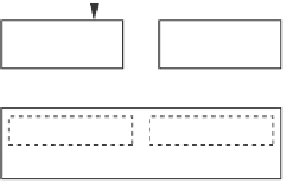Image Processing Reference
In-Depth Information
- creating universal, and therefore reusable inference mechanisms;
- keeping records (explanations) of the inferences obtained.
Such systems can be seen as extensions of the usual expert systems, by allowing
the use of different modes of knowledge representation and reasoning.
The most common method used is shown in Figure 5.1, including the major func-
tions:
- the supervision system in charge of the overall system management, and of the
use of rules (when and how to use them);
- an interfacing system that allows the user to specify particular rules for a given
problem, or to set the objectives for a session;
- an inference engine that activates the processing rules, and generates the sys-
tem's behavior;
- and of course a knowledge base that contains two different categories of knowl-
edge: the facts on one side (in the case of an image processor, this is where the images
are), and the rules on the other side, indicating how the facts should be combined in
order to infer new knowledge.
supervisor
dialog with
the user
inference
engine
fact base rule base
knowledge base
Figure 5.1.
The major functions of a KBS
Building a KBS requires agents with three distinct roles:
- the user fills the system with data to be processed;
- the expert builds the knowledge base;
- the developer builds the inference engine and the reasoning strategy.
The most commonly used model in image processing is based on the “blackboard”,
i.e. an area shared by all of the system's users to drop in information obtained while
the system is operating. The blackboard of an image processing expert system is often
the image itself, or at least a multi-layered extension of the image, with each layer
referenced on the image and bearing the results of a category of operators or experts
applied to a specific area inside the image.










Search WWH ::

Custom Search